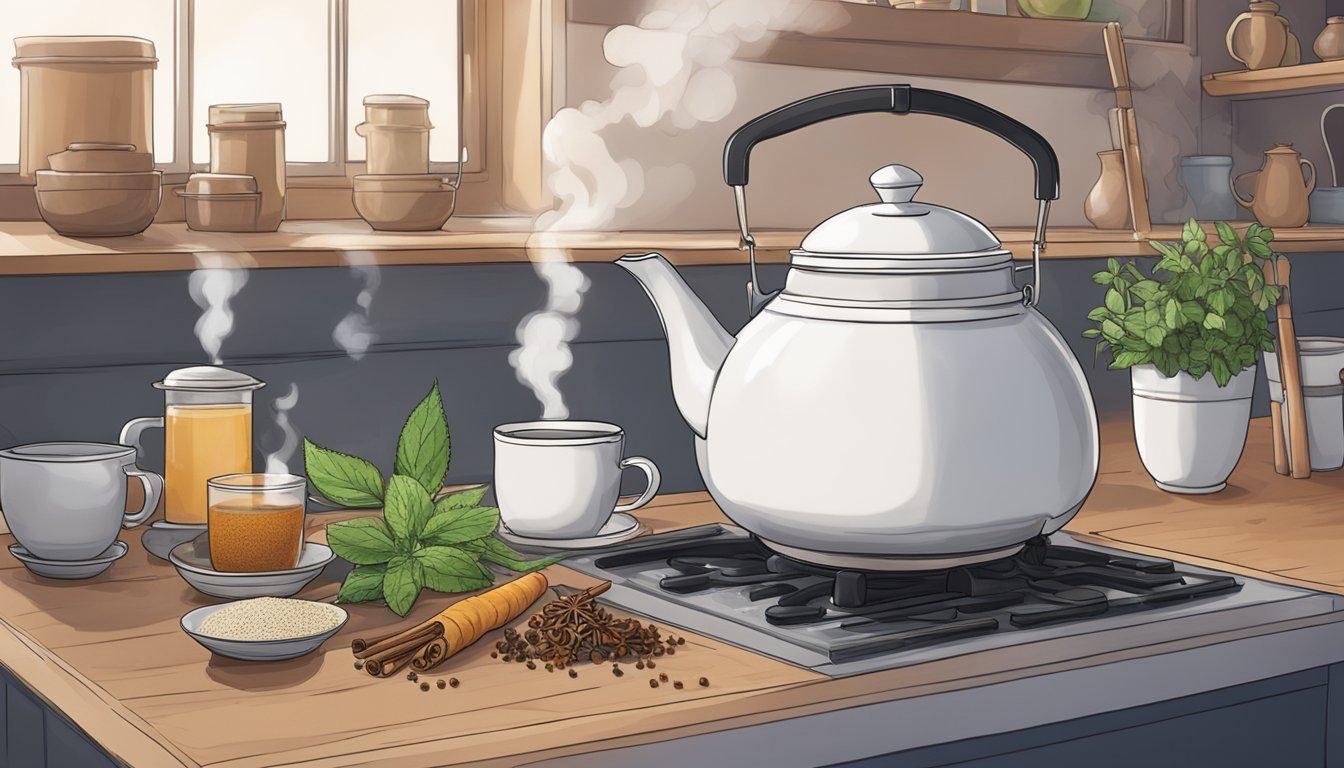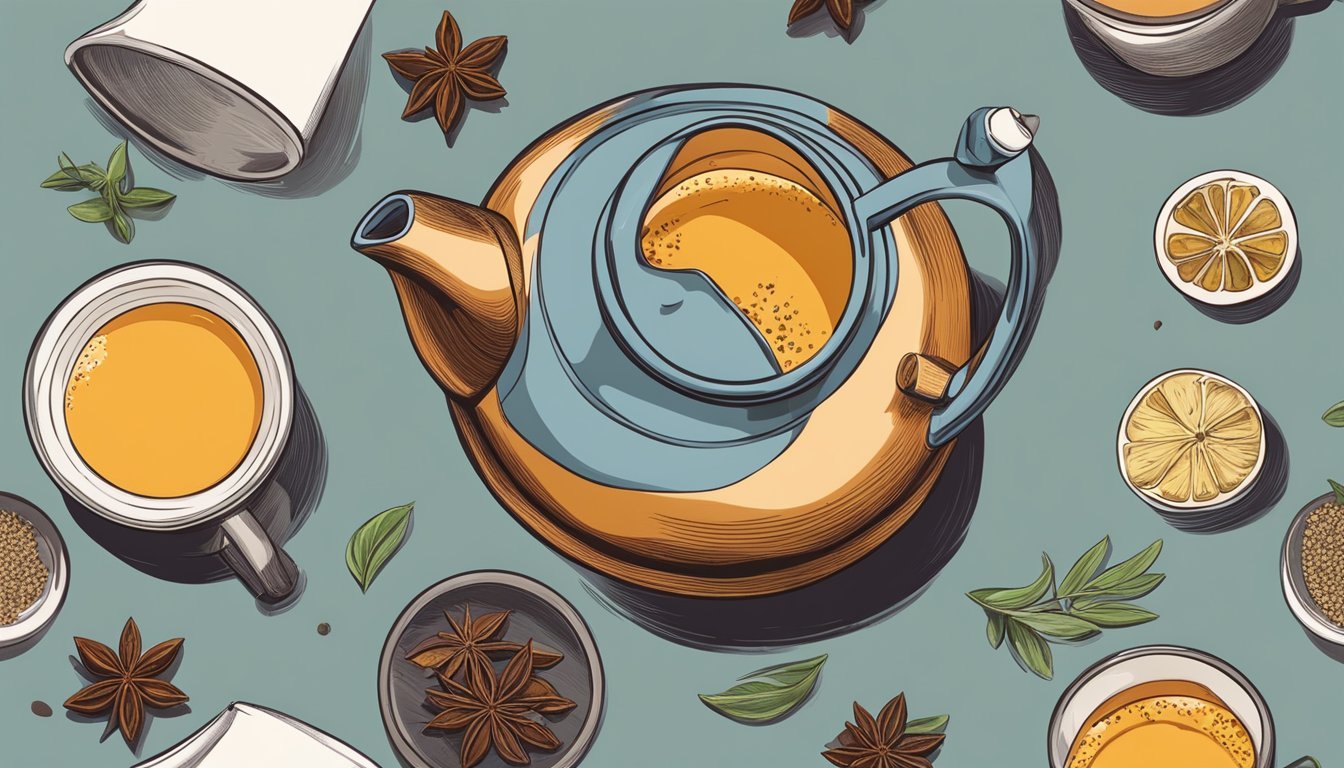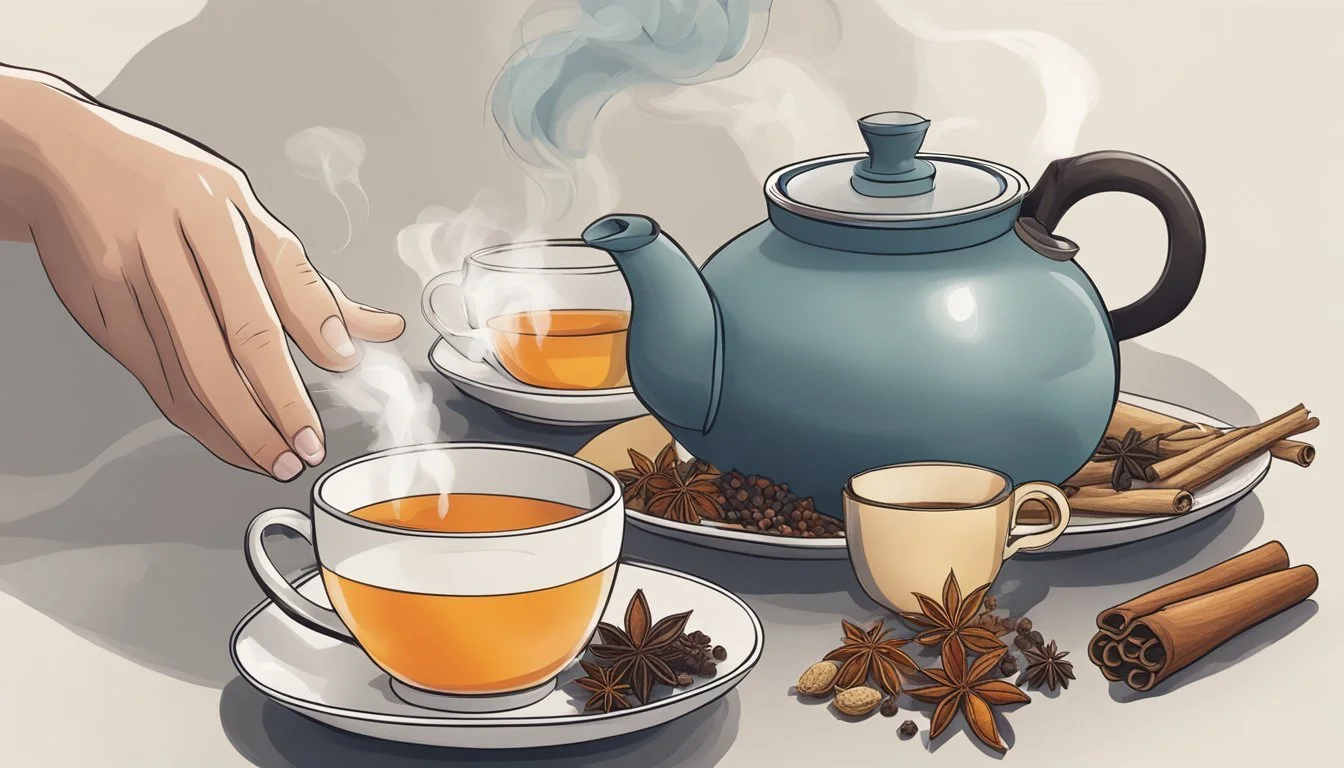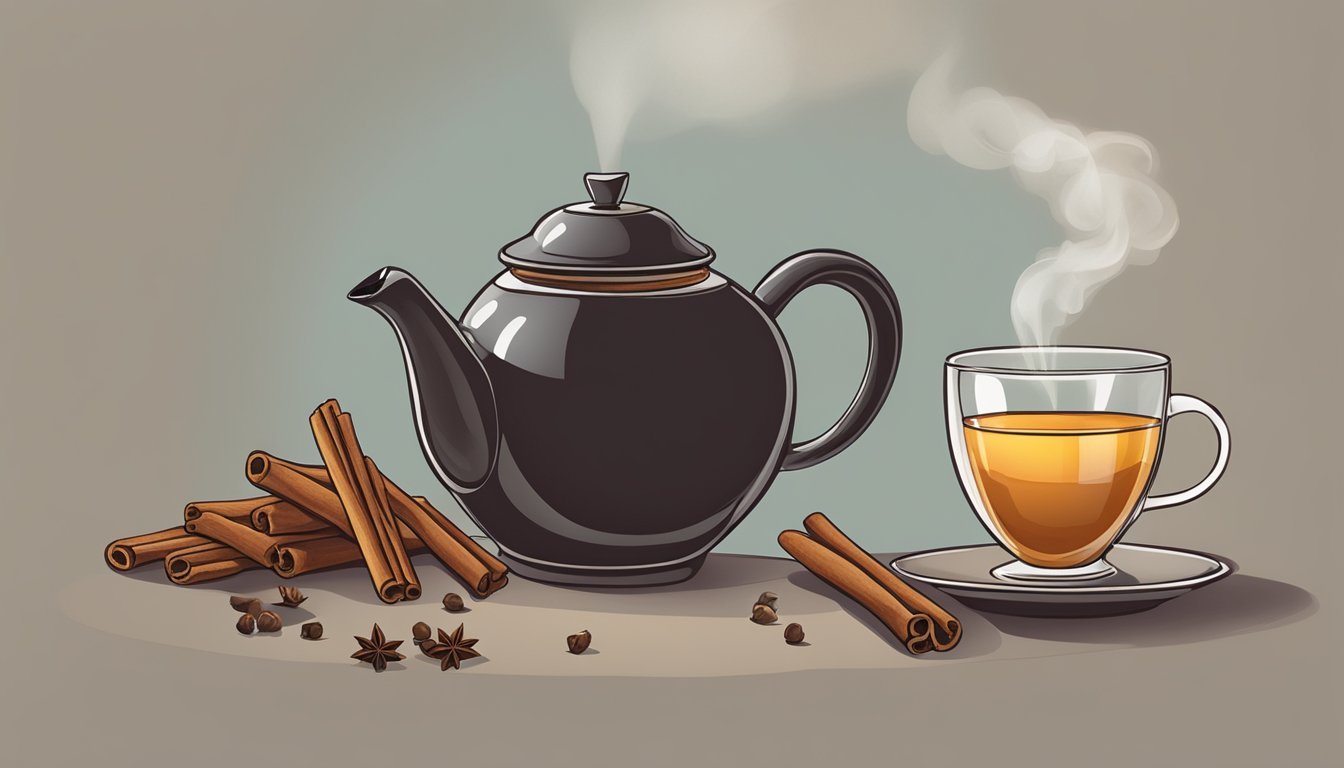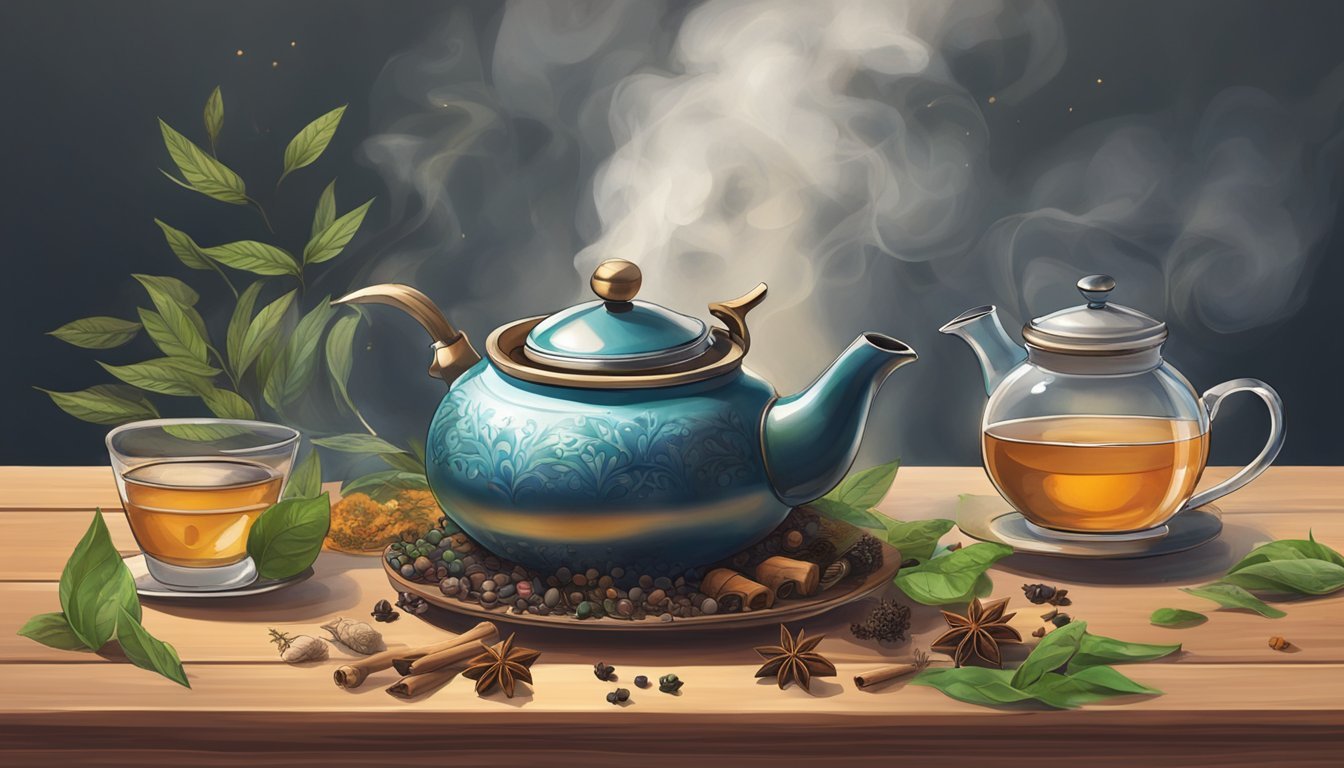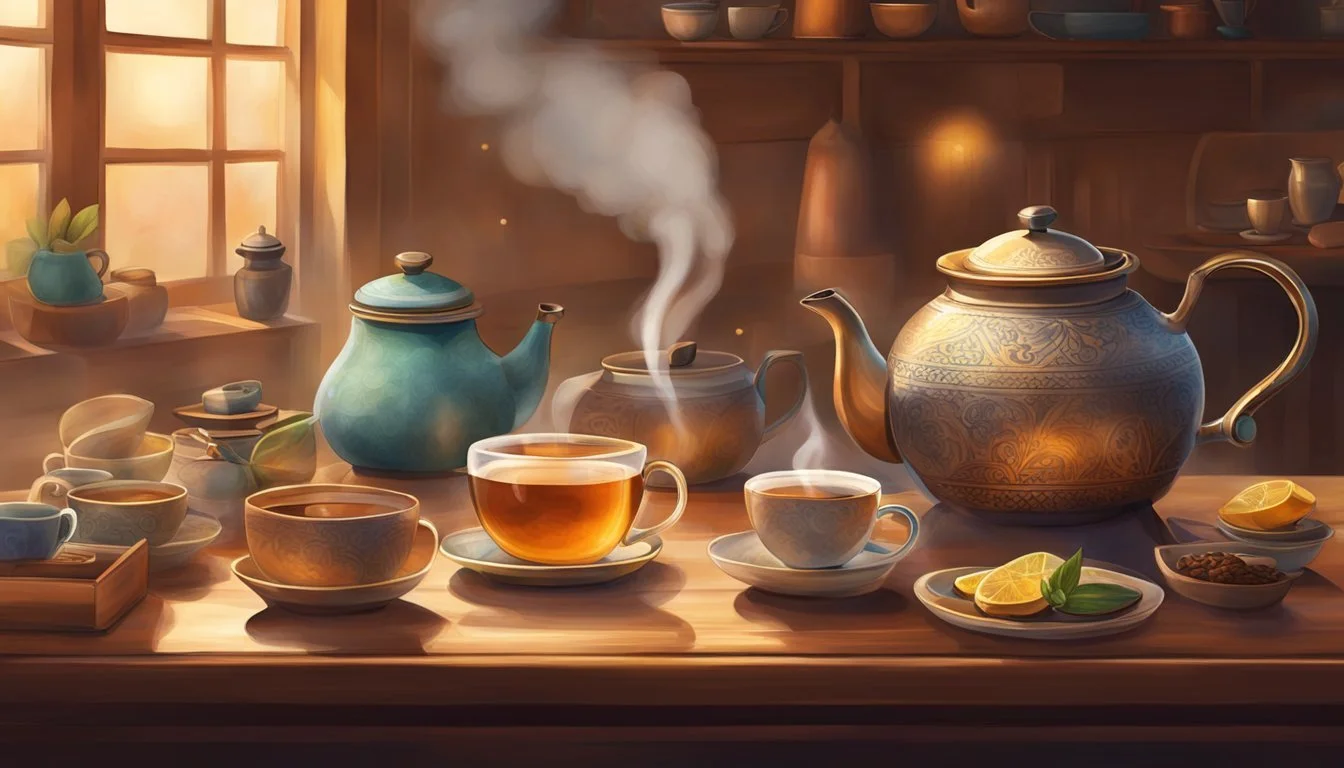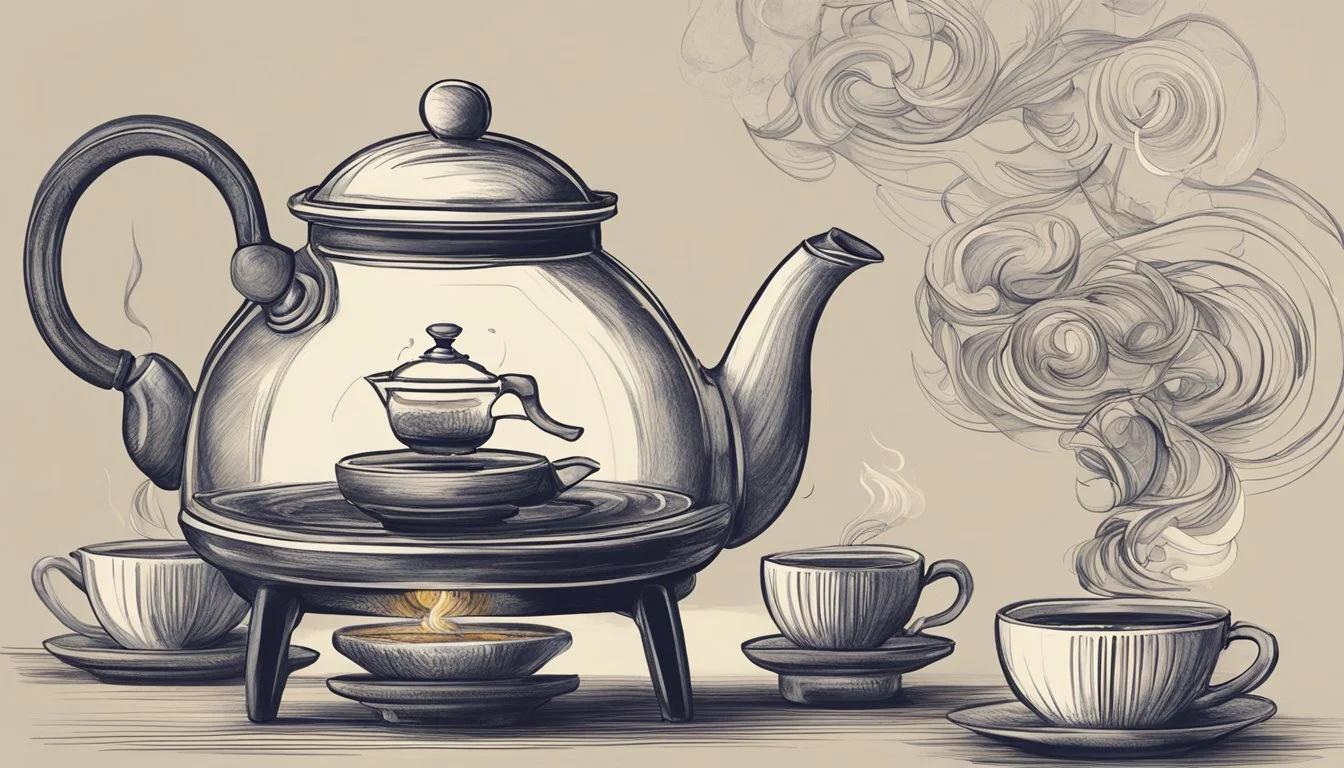The Teapot Chai Guide
Mastering Spiced Tea Brewing at Home
Chai, a blend of black tea infused with a symphony of aromatic spices, is a beloved beverage that has been warming people with its distinctive flavors for centuries. Originating from the Indian subcontinent, the traditional method of preparing chai involves simmering a mixture of spices, tea, milk, and sugar. But for tea enthusiasts without access to specialized brewing equipment, crafting a pot of spiced chai in the comfort of one's home using just a teapot is an uncomplicated pleasure.
Brewing chai in a teapot is a straightforward process that begins with gathering spices such as cinnamon, cardamom, ginger, and cloves, which are the cornerstone of chai's complex profile. The spices are gently crushed to release their essence, then combined with loose leaf black tea and boiling water in the teapot. The key to unlocking chai's depth of flavor lies in the steeping time, allowing the spices and tea leaves to harmonize and infuse the water fully.
While traditionally chai is enjoyed with milk and sugar, these additions are tailored to personal preference, with the milk offering a creamy counterbalance to the robust spices and the sugar enhancing the brew's innate sweetness. Whether served as a morning ritual or as a comforting beverage throughout the day, teapot chai stands as a testament to the simplicity and richness of spiced tea brewed without the need for specialized equipment.
Understanding Tea Basics
Before delving into the art of chai crafting, one must grasp the essentials of tea types and brewing techniques. Mastering these fundamentals allows for a better appreciation and execution of spiced tea creation.
Types of Tea
Tea comes primarily from the Camellia sinensis plant, but is categorized based on the processing method and resulting oxidation level. Here are the main types:
Black tea: Fully oxidized, offering robust flavor and commonly used for chai.
Green tea: Minimal oxidation, retains a green color and a more delicate flavor.
Herbal tea: Not true tea, as it does not come from Camellia sinensis. Herbal blends include a variety of ingredients such as flowers, leaves, and spices.
Tea blends: Combinations of different tea types or adding flavors to a single type, designed to create unique flavor profiles.
Tea Brew Fundamentals
Brewing tea is both an art and a science. It involves:
Flavor extraction: The release of flavors from the tea leaves or herbs during steeping.
Steeping time: Ranging from 2 to 5 minutes, depending on the tea type; black tea typically requires 3-5 minutes.
Water temperature: Crucial to extracting the full flavor without bitterness. Black tea needs near-boiling water, whereas green tea fares better with cooler water, around 175-185°F.
Tea Type Temperature Steeping Time Black Tea 200-212°F 3-5 minutes Green Tea 175-185°F 2-3 minutes Herbal Tea 208-212°F 5-7 minutes
Loose leaf tea is often preferred by aficionados for its quality and depth of flavor, compared to bagged teas. When preparing chai, the loose leaf black tea acts as the base, typically complemented by a variety of spices such as cinnamon, ginger, and cardamom.
The Essentials of Chai
Before one embarks on the journey of brewing a traditional cup of masala chai, it is essential to understand the rich tapestry of its history and the fundamental components that make up this renowned beverage.
History and Culture
Chai, or more specifically masala chai, finds its roots deep within Indian culture. It is a spiced tea that has evolved over centuries, becoming an integral part of daily life across the Indian subcontinent. Historically, the version of chai recognized today started gaining popularity in the early 20th century when the British-colonized Indian tea industry began promoting tea consumption among Indians. Masala chai became a concoction of black tea simmered with a blend of spices, typically shared and enjoyed amongst families and friends, thus marking it as a cultural staple.
Defining Masala Chai
Masala chai is a symphony of flavors crafted from a combination of black tea and a selection of spices that may include cinnamon, ginger, cardamom, cloves, and peppercorns. The term 'masala' refers to the mixture of these spices, which is tailored to personal taste and can vary from recipe to recipe.
Ingredient Role in Masala Chai Black Tea Provides a robust, caffeinated base Milk Adds creaminess and complements the spices Spices Contribute the signature warmth and aroma Sweetener Balances the flavors, typically with sugar or honey
Indian chai, while varying regionally in exact spice composition, is not complete without the inclusion of milk. The milk works in harmony with the spices to create a rich and comforting beverage. This timeless drink reflects the history of a nation and continues to be a daily ritual for millions.
Preparing Tea Without Special Equipment
When it comes to brewing a flavorful cup of chai, specialized tea-making equipment is not a necessity. One can utilize common kitchen items to achieve a rich and aromatic beverage.
Using What You Have
A strainer and a cup are primary utensils that can substitute for an infuser when preparing chai. Tea leaves or tea bags are steeped directly in hot water within the cup, and a regular kitchen strainer can separate the leaves from the liquid. Here is what one might need:
Cup: The vessel for your chai; any mug or cup will do.
Strainer: A fine-mesh strainer or cheesecloth to filter out tea leaves and spices.
To make chai without special equipment:
Heat water using a microwave or on the stove in a regular saucepan.
Place the chai spices and tea leaves (or tea bag) directly into the cup.
Pour the hot water into the cup and allow the chai to steep for 3-5 minutes.
Hold the strainer over a second cup and pour the chai through it to catch the leaves and spices.
Alternative Brewing Techniques
For those without an electric kettle, boiling water on a stovetop serves as an effective method for preparing chai's base. Boil water in a saucepan, add your chai spices and tea leaves, and follow these steps for alternative brewing techniques:
French Press: If available, a French Press can be used to steep the tea leaves and spices together. The plunger will strain out the ingredients when the brew is ready.
Simmering Pot: One can simmer the tea leaves and spices in a pot of water on the stovetop, similarly to making a soup or stew, allowing flavors to infuse before pouring through a strainer into a cup.
Each technique ensures the flavor and essence of chai are steeped well into the water, creating a rich and comforting cup of tea without the need for dedicated tea-brewing equipment.
Selecting Your Tea and Spices
The foundation of an excellent cup of Chai lies in the careful selection of robust black tea and a balance of whole spices. These primary components determine the depth, aroma, and flavor profile of the Chai.
Choosing the Right Tea
Black tea serves as the backbone for Chai, providing a strong base that carries the spices well. Assam tea, known for its full-bodied richness, makes for a robust Chai. Alternatively, Darjeeling tea offers a more delicate and nuanced flavor. It's critical to choose high-quality black tea leaves, as they will contribute significantly to the Chai's overall taste.
Assam tea: Full-bodied and robust, excellent for a stronger Chai.
Darjeeling tea: Lighter and more nuanced, suitable for a more aromatic Chai.
The choice between loose leaf tea and tea bags is largely a matter of convenience, though loose leaves often result in a richer infusion.
Whole Spices Vs Ground Spices
The use of whole spices is paramount in Chai for a fuller and fresher flavor that can't be matched by pre-ground versions. Whole spices release their flavors slowly, creating a more nuanced and complex cup of Chai. Starting with whole spices allows for toasting them to enhance their flavor before crushing them gently to be brewed.
Cardamom: Aromatic and pungent, often used as the dominant note.
Ginger: Adds a warm, spicy kick.
Cinnamon: Sweet and woody, providing a comforting note.
Cloves: Intensely aromatic, contributing a vigorous essence.
Utilizing a mortar and pestle to crack or crush the spices slightly can further augment the infusion of flavors. It is also worth noting that whole spices retain their potency for longer periods, ensuring that each batch of Chai is as vibrant as the last.
Step-By-Step Brewing Guide
To create the perfect cup of Teapot Chai, one must focus on the preparation of spices and the brewing process. This guide will ensure a flavorful experience of making masala chai without the need for special equipment.
Preparing the Spices
One begins by gathering the essential spices, which typically comprise cinnamon, cardamom, cloves, black peppercorns, and fresh ginger. These spices form the masala mix that's characteristic of masala chai. It is recommended to use fresh ginger for its pungent and spicy qualities, and the spices should be ground just before use to maintain their potency. To prepare:
Cinnamon: Break one stick into small pieces.
Cardamom: Crush 4-6 pods.
Cloves: Use 4-5 cloves.
Black Peppercorns: Crush 4-5 for mild heat.
Ginger: Grate half an inch of fresh ginger.
Brewing Your Chai
For the brewing process, a standard tea kettle will suffice. Begin by filling the kettle with water and bring it to a boil on the stove.
While the water is boiling, place the fresh spice mix into the teapot.
Add one heaped teaspoon of black tea per person into the teapot.
When the water reaches a rolling boil, pour it into the teapot over the tea and spices.
Cover the teapot and let the chai steep for 3-5 minutes.
After steeping, strain the chai into cups to remove the tea leaves and spices.
Note: If one prefers a stronger chai, they can steep their brew for up to 7 minutes. Adjusting the steeping time allows control over the intensity of the spice flavors and tea strength.
Serving and Enjoyment
Once the chai is brewed to perfection, the next delightful phase is the serving and enjoyment of this aromatic beverage. Whether one prefers it steaming hot or refreshingly iced, this section will guide them through the essentials of savoring their chai to the fullest.
Hot vs Iced Chai
Hot Chai: For most, chai is synonymous with a hot, comforting drink. To serve hot chai:
Pour the chai through a strainer into mugs or cups.
Sweeten to taste using sugar, honey, or your preferred sweetener.
If desired, add frothed milk to create a creamy texture. Usually, a ratio of 1:4 milk to chai is suggested.
Iced Chai: In warmer climates or seasons, chai can be enjoyed cold. Here are the steps for iced chai:
Allow the brewed chai to cool at room temperature for a short period before placing it in the refrigerator.
Once chilled, fill a glass with ice cubes.
Pour the cold chai over the ice.
For sweetness, stir in a liquid sweetener, as granulated sugar may not dissolve well in cold beverages.
Top with a splash of milk or a dollop of frothed milk for a touch of creaminess.
Each serving method accentuates the rich flavors of chai in a different way, catering to the drinker's mood or preference. Whether served hot with a cozy froth of milk and a hint of sweetness, or cold as a brisk iced drink that refreshes, chai remains a versatile and beloved beverage across the globe.
Caring for Your Teaware
Proper maintenance of teaware not only prolongs its life but also ensures the integrity of the tea's flavor. It is crucial to account for the material and handling practices for each type of teaware.
Maintenance and Cleaning
To preserve the functionality and aesthetics of teaware, regular cleaning is imperative. For ceramic and porcelain teapots, a mild detergent and warm water work effectively; however, they should be rinsed thoroughly to avoid soap residue which can alter the taste of tea.
Glass teapots benefit from a gentle hand-wash to prevent scratches and to maintain clarity.
Cast iron teapots require immediate drying after rinsing to prevent rust.
One should always refer to the manufacturer's specific cleaning instructions, as certain features might demand special care.
Material and Durability Considerations
The longevity of teaware significantly depends on its material.
Ceramic: Durable but prone to chipping, keep away from hard impacts.
Glass: Offers elegant aesthetics but requires careful handling due to its fragility.
Porcelain: Known for its fine quality, but like glass, it is susceptible to cracking upon thermal shock.
Cast iron: Highly durable with proper care; avoid harsh detergents that can damage the protective coatings.
When choosing teaware, consider the balance between material strength and the features you value, whether it be durability or design appeal.
Enhancing the Chai Experience
The journey to a perfect cup of chai is both traditional and personal, where every sip can be a new discovery. This exploration involves not only mastering the core brew but also experimenting with additional flavors and recognizing the healthful qualities of its ingredients.
Additional Flavors and Variations
Chai is a versatile beverage that allows for numerous flavor enhancements and variations. By adding ingredients such as vanilla, peppercorn, or nutmeg, drinkers can tailor their tea to suit their personal taste preferences.
Classic spices: Cinnamon, ginger, cardamom, and clove
Additional layers:
Vanilla: A dash of vanilla extract adds a warm, creamy note.
Peppercorn: A few black peppercorns introduce a warming spice.
Nutmeg: Grating in nutmeg adds depth and a hint of sweetness.
Chocolate: Cocoa powder can create a rich, decadent chai.
For those wishing to reduce the natural bitterness of black tea, a touch more milk or a hint of sweetener like honey or maple syrup can create a more mellow flavor.
Health Benefits of Chai Ingredients
The ingredients in chai not only contribute to its unique flavor profile but also offer several health benefits.
Ginger: This root is known for its digestive and anti-inflammatory properties.
Cinnamon: High in antioxidants, cinnamon can also regulate blood sugar levels.
Cardamom: This spice may help lower blood pressure and has antimicrobial effects.
Cloves: Cloves are a natural antiseptic and contain anti-inflammatory compounds.
While the beverage can be a healthy choice, one should be aware of the addition of sweeteners which can increase calorie content. However, chai's spices are linked to various health benefits, making the tea a nourishing choice for both mind and body.
Frequently Asked Questions
What is the correct steeping time for Chai? The ideal steeping time for Chai tea is 3-5 minutes. Steeping for this duration allows the flavors of the spices and black tea leaves to infuse properly.
Can I prepare Chai with loose leaves? Yes, one can certainly prepare Chai using loose tea leaves. To do so, they should use 1 teaspoon of loose tea leaves per cup of water. It's recommended to strain the leaves after steeping.
Is special equipment necessary to brew Chai? No special equipment is required. A regular saucepan and a fine-mesh strainer or cheesecloth are sufficient to brew a robust cup of Chai.
What is the basic method to prepare a Chai infusion?
Boil water in a saucepan.
Add black tea and spices to the boiling water.
Allow the mixture to steep for 3-5 minutes.
Strain the tea leaves and spices.
Sweeten and add milk as desired.
Do I need to use specific spices for Chai? Chai traditionally includes spices such as cardamom, cloves, cinnamon, and ginger. However, individuals can adjust spices to their personal taste preference.
What is the best way to enhance the flavor of Chai? To enhance the flavor, one should ensure the use of fresh spices and adjust the steeping time to their taste. Additionally, using whole milk will create a richer flavor.
Finding the Best Deals and Accessories
When venturing into the brewing of spiced tea, finding high-quality accessories without breaking the bank is crucial. This section will guide you on how to shop smart for teapots and accessories and what essentials you'll need for a satisfying Chai experience.
Tea Shopping Tips
When searching for deals on tea accessories, consider visiting blogs dedicated to the art of tea. They often feature reviews and deal alerts for various tea sets. Here are a few tips for savvy shopping:
Subscribe to newsletters of reputable tea and teapot sellers to get early access to sales.
Look for bundle deals on tea sets that include all of the necessary components at a discounted price.
Check online marketplaces during seasonal sales when tea-related products might be offered at a reduced cost.
Must-Have Accessories
To enjoy Chai authentically, one must gather the right accessories. Here's a shortlist of essentials every enthusiast should consider:
Pots: A stainless steel stovetop pot is often recommended by tea experts for its durability.
Tea Infusers: A simple, yet efficient way to steep loose-leaf tea without residue.
Gaiwans: Traditional Chinese lidded bowls, ideal for multiple steepings of fine tea.
Kyusu: A Japanese teapot with a side handle, perfect for brewing green teas.
Remember, while accessories like gaiwans and kyusu add to the cultural touch, they are not essential for brewing Chai, and a good quality teapot with an infuser can serve well.
Advanced Techniques and Expert Advice
Perfecting the craft of chai brewing requires precision in technique and temperature, as well as insights from seasoned tea experts. The following section presents advanced methods to enhance the chai brewing experience.
Mastering the Art of Tea Brewing
To achieve optimal flavors, one must pay close attention to brewing temperature and timing. Traditional chai benefits from boiled water, typically around 100°C (212°F), to extract the full range of flavors from the spices and tea leaves. A thermometer can ensure accuracy. Here are specific tips and tricks for a superior brew:
Tea-to-Water Ratio: Use one heaped teaspoon of loose-leaf chai per cup of water, adjusting for strength preference.
Boil Then Simmer: Boil the water with spices before adding the tea leaves to ensure thorough infusion.
Steep Time: Allow the chai to steep for 3-5 minutes for full-bodied taste, tasting intermittently.
Straining Technique: Use a fine-mesh strainer or cheesecloth to remove all particulates, delivering a smooth cup of chai.
Consulting with Tea Experts
Tea experts can illuminate the finer points of chai preparation and provide personalized advice tailored to individual palates. They are valuable resources for detailed insights, such as:
Local Water Quality: Understanding how the mineral content of the local water supply can affect the taste of your chai.
Spice Selection: Learning to select and balance spices based on freshness and provenance for a custom chai blend.
Sustainable Practices: Seeking expertise on sourcing tea ethically and in support of sustainable farming practices.



